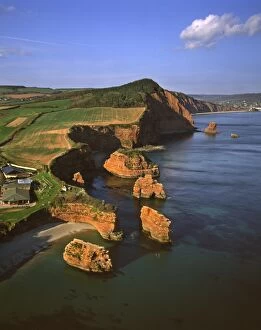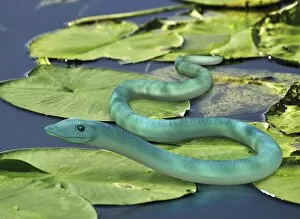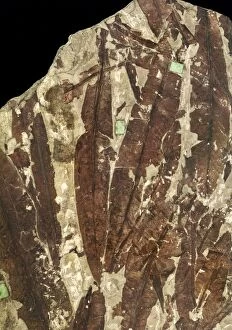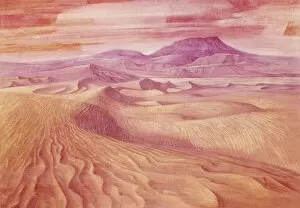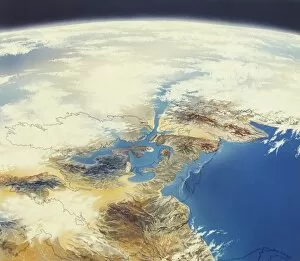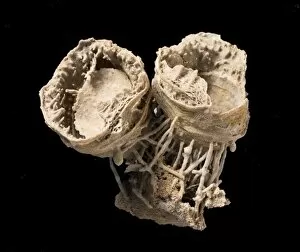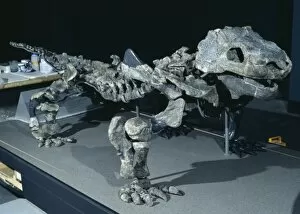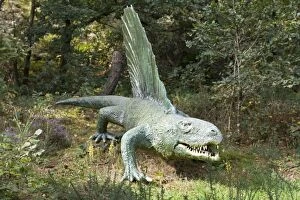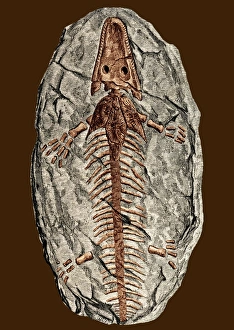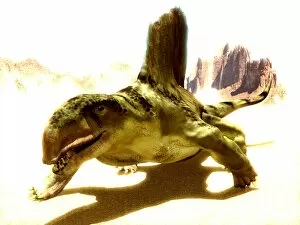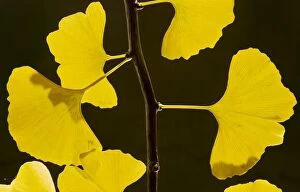Permian Collection (page 4)
The Permian period, a fascinating chapter in Earth's history, is beautifully captured in this diverse collection of images
All Professionally Made to Order for Quick Shipping
The Permian period, a fascinating chapter in Earth's history, is beautifully captured in this diverse collection of images. Starting with the geological map of the European Alps from 1897, we can trace the ancient landscapes that once dominated this region. The lithograph showcases intricate details and highlights the complex formations that have shaped our planet over millions of years. Moving on to plant life during the Permian, we are transported to a lush and vibrant world. The plant landscape reveals an array of species that thrived during this time, offering a glimpse into their beauty and diversity. Amongst these plants roamed extraordinary creatures like Archegosaurus, an extinct genus of temnospondyls. These amphibians ruled both land and water with their unique adaptations. A breathtaking aerial view captures the San Juan River cutting through Raplee Anticline near Bluff. This striking image showcases nature's power as it carves its way through rock formations created during the Permian era. Another snapshot takes us directly into a Permian landscape where ancient ferns flourished abundantly. Preserved as fossils, these delicate remnants provide valuable insights into past ecosystems and help scientists piece together Earth's evolutionary puzzle. Orthocerid hunting trilobites come alive in stunning artwork depicting their prehistoric interactions. This captivating scene transports us back to a time when these marine creatures engaged in an eternal dance between predator and prey beneath ancient seas. Elginia mirabilis emerges next—a remarkable pareiasaur from long ago—its unique features preserved forever within fossil records found near Keetmanshop in Namibia, Africa. Such discoveries shed light on distant worlds that existed before our own. As if stepping further back in time, we encounter a reconstruction of Brachiosaurus—an enormous dinosaur that once roamed vast stretches of land during the late Jurassic period. Its colossal size leaves us awestruck at nature's ability to create such magnificent beings.

